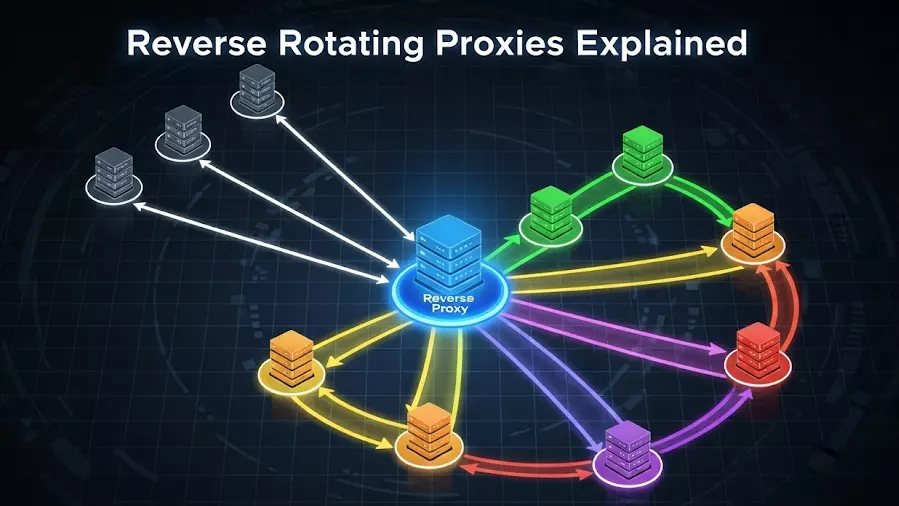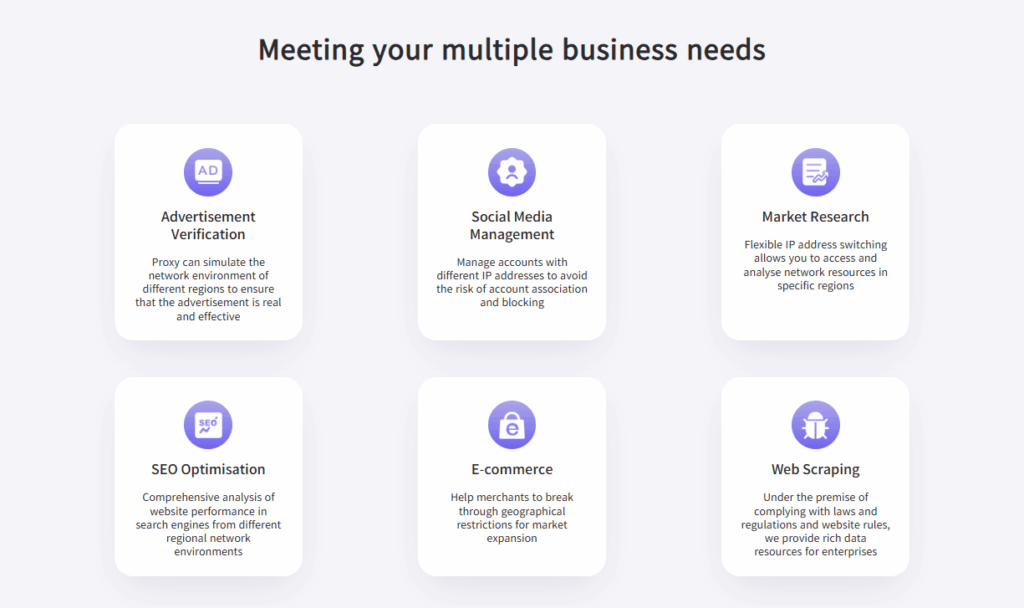When we talk about proxy solutions, most people are familiar with rotating residential proxies or static proxies. But reverse rotating proxies are a more specialized tool designed for businesses and developers who need reliability, flexibility, and scalability. In simple terms, they combine the reverse proxy architecture with rotating IP pools, offering the ability to hide backend infrastructure while dynamically distributing requests across multiple IPs.
This setup allows companies to balance security, speed, and anonymity while avoiding common blocks or rate limits. Let’s break down exactly how reverse rotating proxies work, their benefits, key use cases, and how you can set them up effectively in 2025.

How Reverse Rotating Proxies Work
To understand reverse rotating proxies, it helps to start with the basics of a reverse proxy. A reverse proxy sits in front of one or more servers and handles requests from users, routing them internally to the right destination. This makes it different from a forward proxy, which works on the client side to mask user activity.
By adding a rotating mechanism, each request from the reverse proxy can exit through a different IP address, sourced from a large pool. This process ensures that:
- Requests look like they come from diverse locations.
- Backend servers remain shielded from direct exposure.
- Load is balanced more evenly across multiple servers.
In short, reverse rotating proxies act like both a gatekeeper and a disguise for businesses handling large-scale online operations.
Key Benefits of Reverse Rotating Proxies
- Enhanced Security
One of the main reasons businesses adopt reverse rotating proxies is for infrastructure protection. Since incoming requests never directly hit your servers, malicious actors have a harder time identifying or attacking the backend. Combined with IP rotation, this adds security layer that reduces risks of DDoS or IP-based blocking.
- Improved Anonymity and Privacy
For businesses engaged in sensitive operations like data collection, ad verification, or market research, anonymity is essential. Rotating IPs prevent tracking, while the reverse proxy structure ensures backend IPs remain undisclosed.
- Better Load Balancing
Reverse rotating proxies distribute requests across multiple IPs and servers, reducing bottlenecks. This makes them highly effective for organizations experiencing spikes in traffic or handling thousands of concurrent connections.
- Higher Success Rates in Web Tasks
Whether scraping e-commerce sites, checking SEO rankings, or monitoring competitor ads, businesses face frequent IP bans. With rotating IP pools, each request appears unique, dramatically improving the success rate compared to static proxies.
- Centralized Management
Instead of configuring multiple endpoints, reverse rotating proxies allow admins to manage all IP rotation, filtering, and routing rules in one place. This saves time and reduces errors in complex workflows.
Real-World Use Cases of Reverse Rotating Proxies

Web Scraping at Scale
Companies engaged in large-scale web scraping—such as aggregating pricing data or monitoring product availability—benefit greatly from reverse rotating proxies. They bypass detection systems while protecting backend scrapers from bans.
Ad Verification
Digital advertisers use reverse rotating proxies to verify that ads appear correctly across different regions. The rotation ensures accurate results without triggering fraud detection systems.
Content Delivery and Global Testing
Enterprises delivering digital content often need to test access from multiple geolocations. Reverse rotating proxies provide this by serving traffic through global IP pools while shielding origin servers.
Cybersecurity and Fraud Prevention
Fraud detection systems often rely on diversified IP monitoring. Businesses can deploy reverse rotating proxies to track suspicious activities across multiple IPs without exposing their security infrastructure.
Social Media Management
Managing multiple accounts across platforms like Instagram, TikTok, or X (Twitter) is easier when requests are routed through rotating IPs. This prevents account locks while allowing smoother automation.
How to Set Up Reverse Rotating Proxies
Step 1: Choose the Right Provider
Not all proxy services offer reverse rotating setups. Providers like IPFLY, with access to over 90 million IPs worldwide, give enterprises flexibility in selecting residential, ISP, or datacenter pools. The advantage lies in customizable rotation rules and strong backend shielding.
Step 2: Configure Rotation Rules
Rotation can be based on:
- Time-based intervals (e.g., every 30 seconds).
- Request-based triggers (after X number of requests).
- Custom logic based on website response codes.
Step 3: Deploy Reverse Proxy Layer
This layer acts as the gateway. All user or bot requests pass through it, and the proxy decides which IP to assign. Businesses can integrate load balancers and caching for efficiency.
Step 4: Monitor and Optimize
Using analytics, businesses can track success rates, latency, and blocked requests. Adjusting rotation frequency and IP types is key to long-term performance.
Challenges and Considerations
Latency Issues
Since requests are routed through multiple layers, some setups may introduce a delay. Choosing high-speed providers minimizes this.
Cost of Large IP Pools
Maintaining rotating pools with millions of IPs can be expensive, especially for businesses running global operations.
Configuration Complexity
Reverse rotating proxies are more complex than forward or static proxies. Businesses need technical expertise to ensure smooth deployment.
Why Enterprises Prefer IPFLY for Reverse Rotating Proxies

At IPFLY, we’ve seen enterprises across industries adopt reverse rotating proxies for their scalability and flexibility. With coverage in 190+ countries, our infrastructure ensures:
- Access to 90M+ IPs (residential, ISP, and datacenter).
- Secure backend shielding with reverse proxy architecture.
- Customizable rotation logic for advanced workflows.
This makes IPFLY a reliable partner for companies handling web scraping, ad verification, social media management, and cybersecurity monitoring. By leveraging our self-built servers and intelligent filtering systems, clients maintain high success rates with minimal risk.
Conclusion: Is It Time to Use Reverse Rotating Proxies?
Reverse rotating proxies are not just a niche tool—they are a business-grade solution for enterprises managing security, scalability, and data collection at a global scale. They combine the anonymity of rotating proxies with the protection of reverse proxy architecture, making them ideal for modern digital operations.
By carefully selecting a provider, configuring rotation rules, and optimizing performance, companies can unlock the full benefits of reverse rotating proxies in 2025 and beyond.
Stay connected with IPFLY’s team and community on Telegram.


